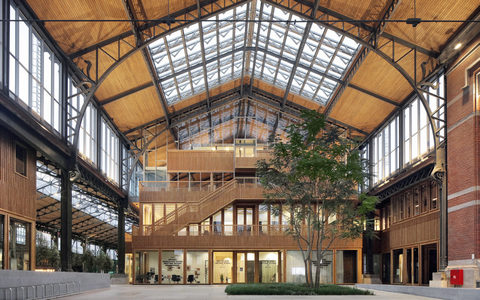In recent years, changes in the real estate market have allowed the rise of adaptive reuse, that is, the reuse of existing buildings or infrastructure to give a new use to historic properties. Today on the CREA blog we will talk about this trend and the value it can bring to cities in the long term.
What is adaptive reuse?
Adaptive reuse is a real estate strategy in which already built buildings are reused to adapt them to fulfill different functions. For example, the infrastructure of an old factory can be converted into an academic training center, or a new shopping center.

Why has adaptive reuse become a trend?
Adaptive reuse has become one of the most important trends in search for the following reasons:
- Preserve the historical value of buildings.
- Take advantage of savings by reusing the existing structure.
- Avoid unnecessary demolitions and constructions.
- It is a sustainable alternative that has a lower environmental impact than construction from scratch.
Adaptive reuse: key to decarbonizing construction
In 2022, during the COP27 United Nations Conference, the United Nations reported that the construction sector was responsible for more than 34% of energy demand for heating, cooling, lighting and equipment of buildings, and 37% of carbon dioxide emissions.

These emissions correspond to an equivalent of ten gigatonnes of carbon dioxide, and were 5% higher than in 2020. The use of fossil fuels continues to be the main cause of CO2 emissions, therefore, the decarbonization of the Construction is essential to reduce the carbon footprint of the sector.
Adaptive reuse is key to this mission since the demolition of buildings is not required, and current construction materials can be used, or others that are more ecological, such as wood, bamboo, recycled steel, thermoplastics, paints made with natural pigments and without additives harmful to the environment.
Benefits of adaptive reuse
Adaptive reuse not only brings benefits for investors, or for the construction sector, but for the environment in general and the environment. For example:
More sustainable industry
New construction has adverse environmental effects. In addition, various soil, environmental impact studies, among others, must be carried out. However, with reuse, infrastructure can be used without generating waste and debris from demolitions, saving hundreds of tons of CO2 emissions.
Preservation of historical heritage
Adaptive reuse is flexible and opens the way to the preservation of properties with historical or cultural value. Instead of restoring a property to try to regain its former grandeur, convert it into a contemporary structure that has elements of the original.
For example, in the City of Tlaxcala is Val’Quirico, the old Santa Águeda hacienda where milk was produced, and which is currently a residential complex with architecture and decoration inspired by Tuscany, a European countryside with many attractions for visitors.

Reactivate communities
Adaptive reuse projects can revitalize communities that were once large industrial areas and were forgotten by new tourist attractions.
An example of this are the mines of Guanajuato, such as the former El Refugio silver mine, which has been converted into an interactive museum with exhibitions, guided tours and an underground theater, or the San Francisco silver mine, which is currently a cultural center. and educational, with art galleries, workshops, classrooms and an event space.
Examples of this are the mines of Guanajuato, such as the old El Refugio silver mine, which has been converted into an interactive museum with exhibits, guided tours, and an underground theater, or the El Nopal Mine, which is an important tourist site, as it has a tunnel, a chapel, and an underground theater, and is a historical pillar of the regional economy. It also serves as a practice room for students from the University of Guanajuato.

Considerations for adaptive reuse
When considering whether to undertake an adaptive reuse project or demolish a building, developers typically consider a few factors:
- Building condition: Some buildings are beautiful from the outside, but structurally they are so damaged that restoring them is simply impossible.
- Government regulations: Sometimes certain buildings are given historic monument status and can only be modified in specific ways, making many projects difficult to complete.
- Value of materials: When the materials of an existing structure are sufficiently valuable, it can often be more cost-effective to reuse certain elements of a building rather than purchasing entirely new materials.
Do you have a development in mind? Come to CREA and guarantee your investment
At CREA we are real estate consultants specializing in services such as feasibility studies, real estate appraisals, studies of greater and better use of land, real estate repositioning, among others to help our clients get the most out of their investment.
Request more information about our services through the contact form, to the email info@creasoluciones.com.mx or call us at 5552778044 where our specialists will be happy to assist you.




